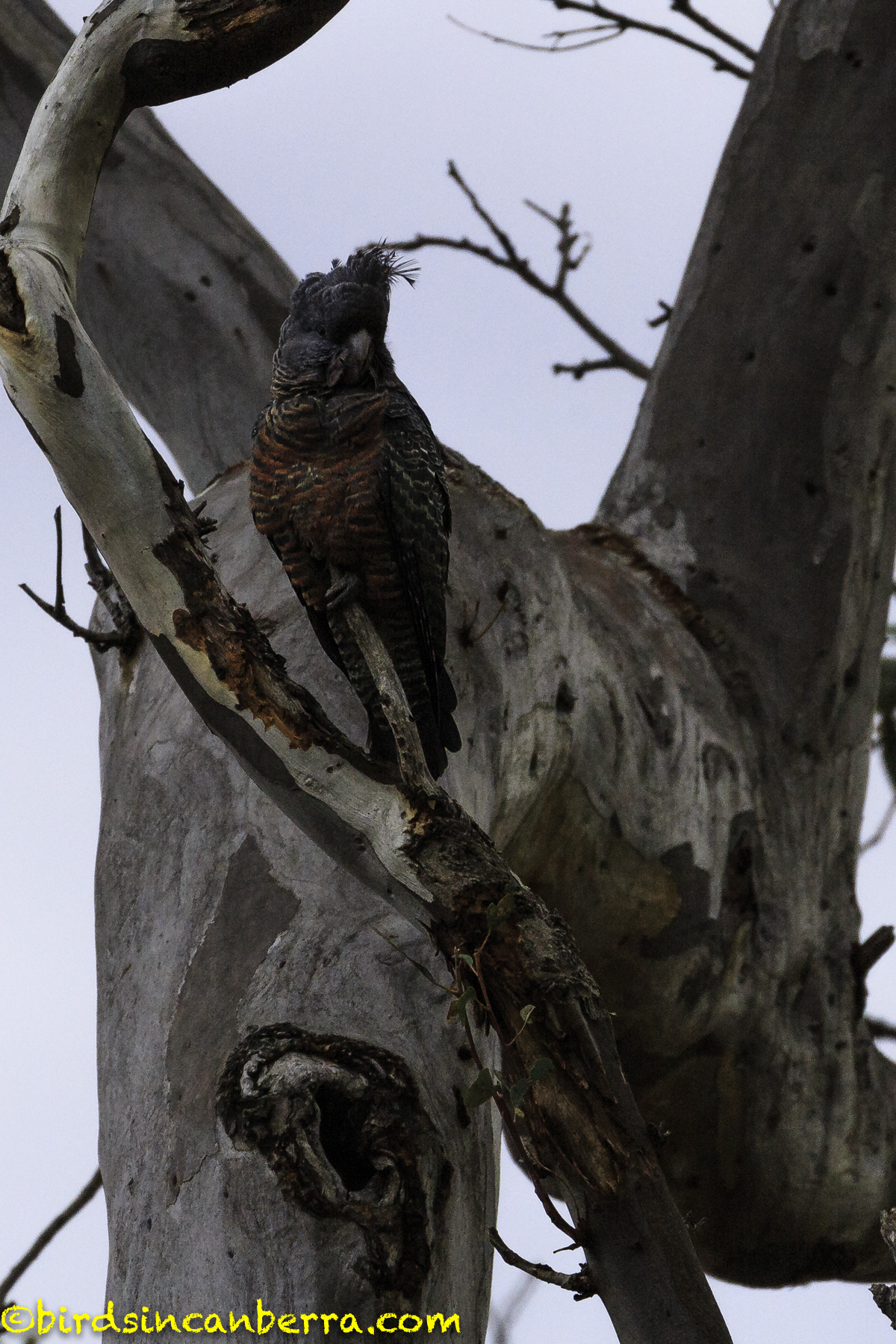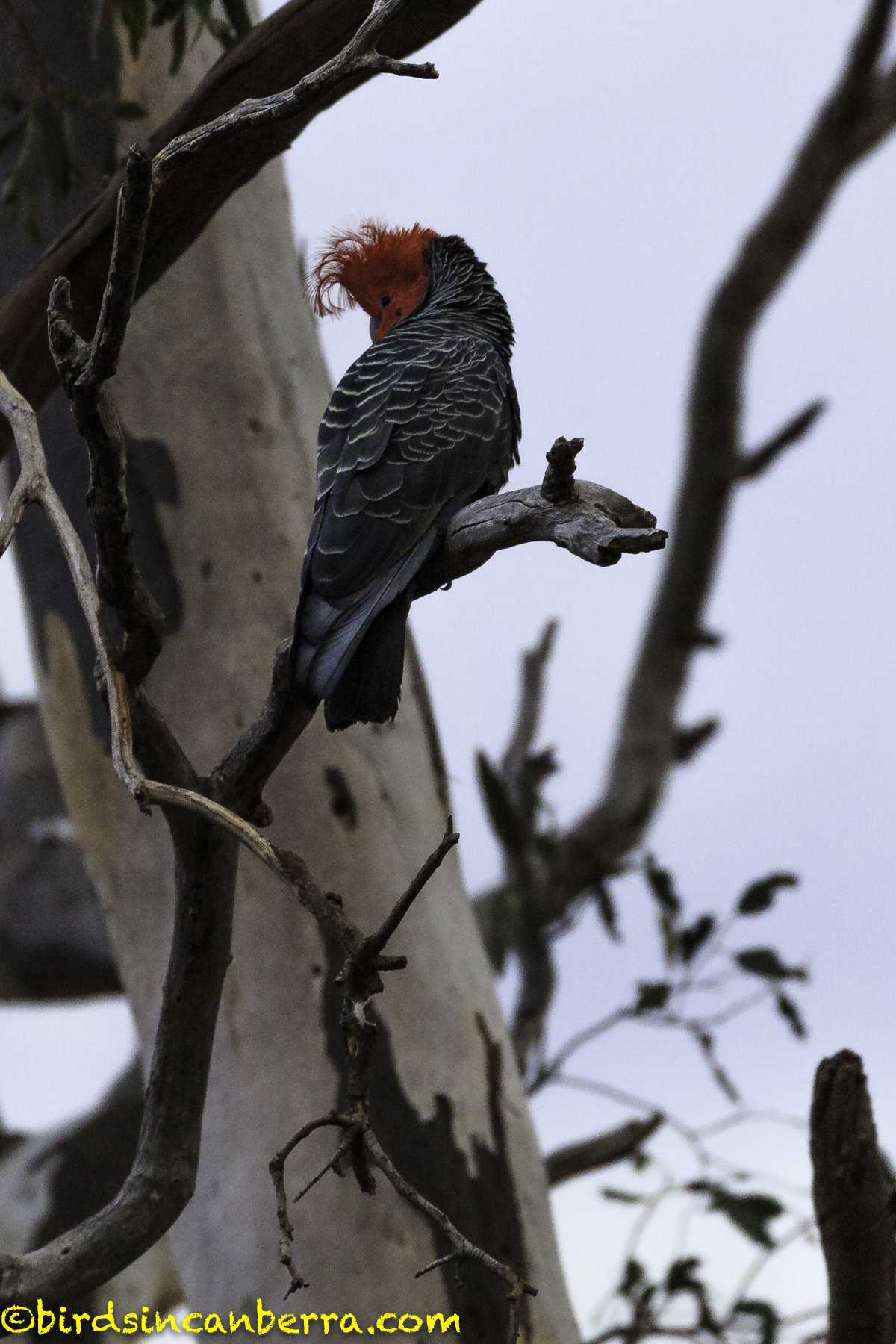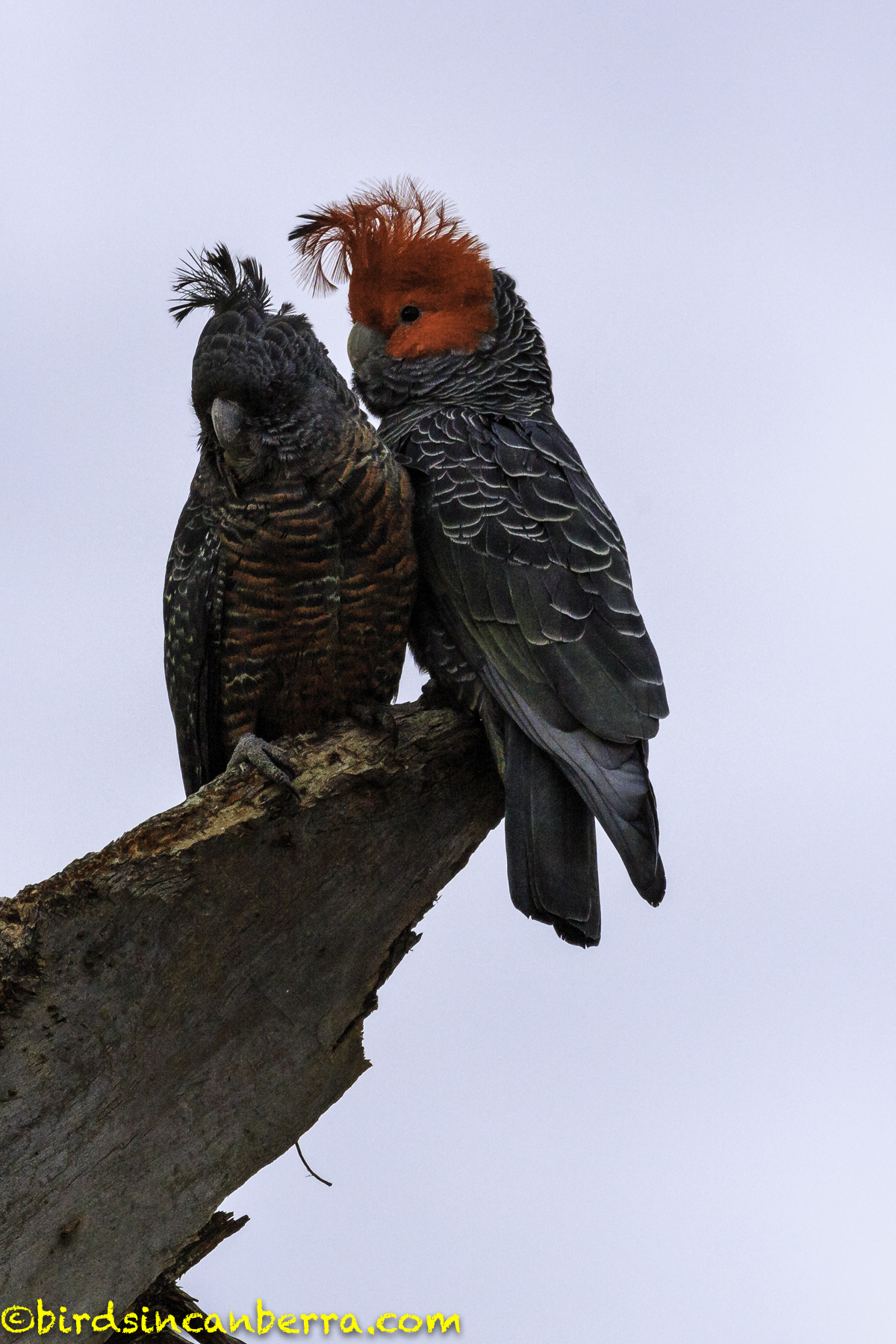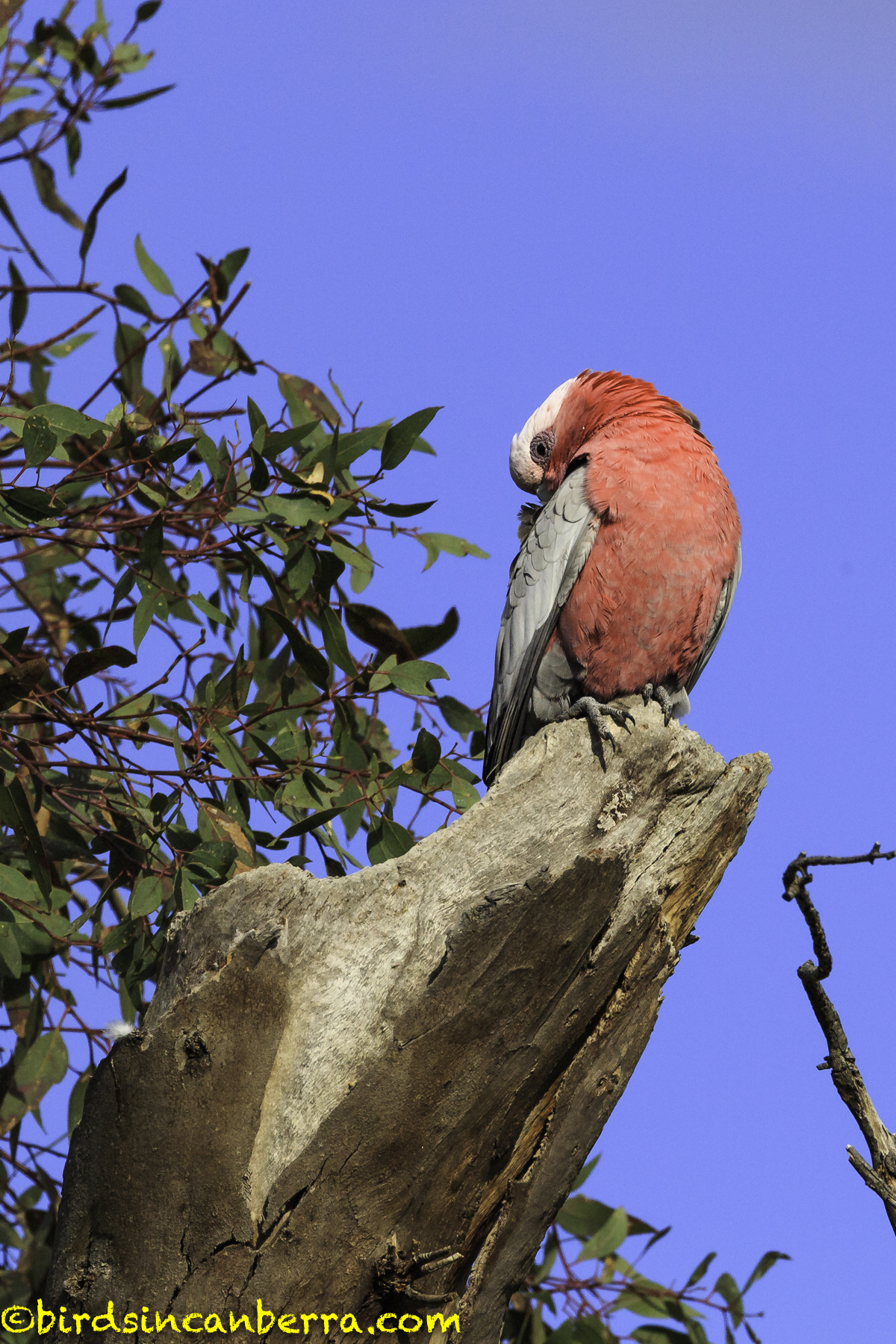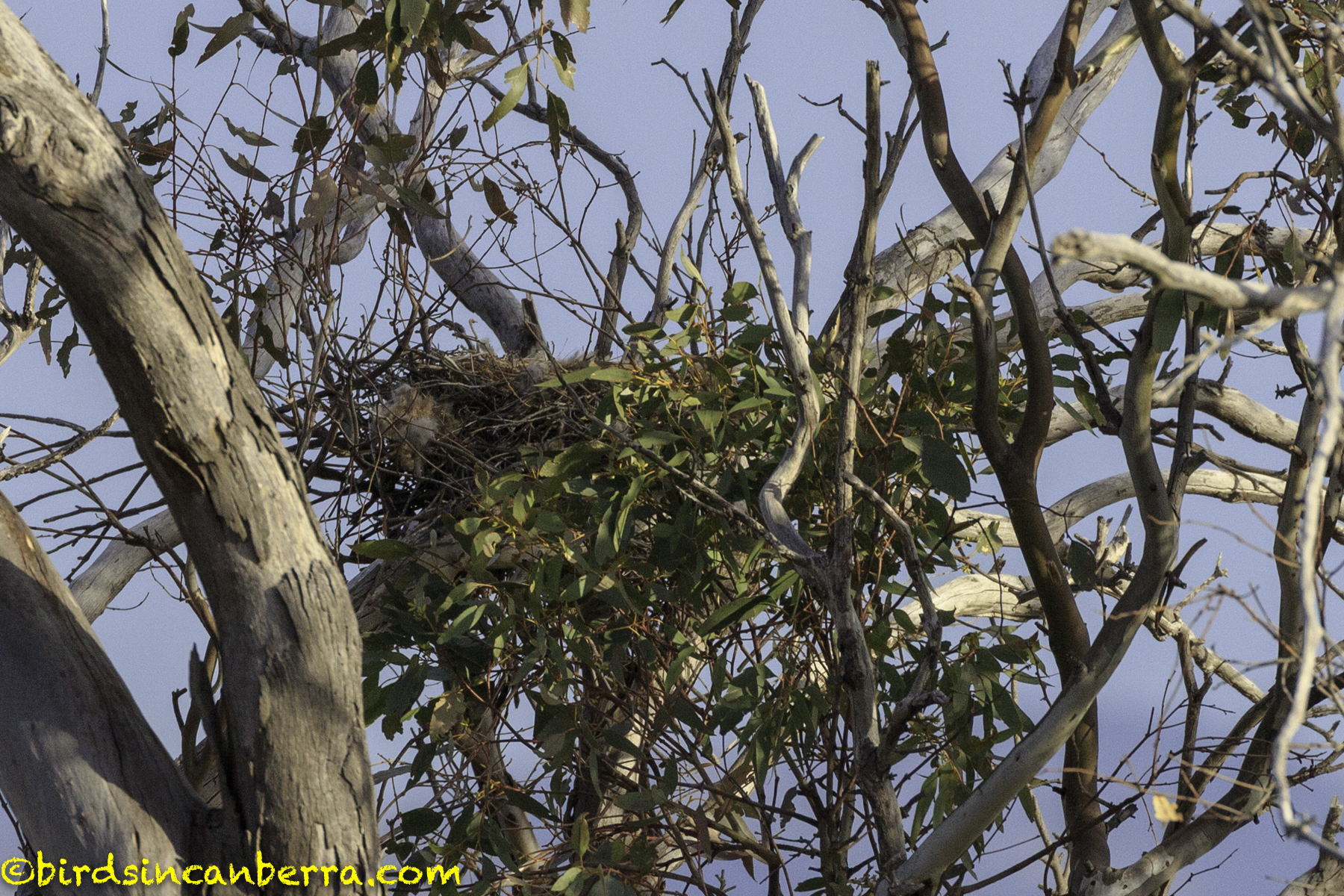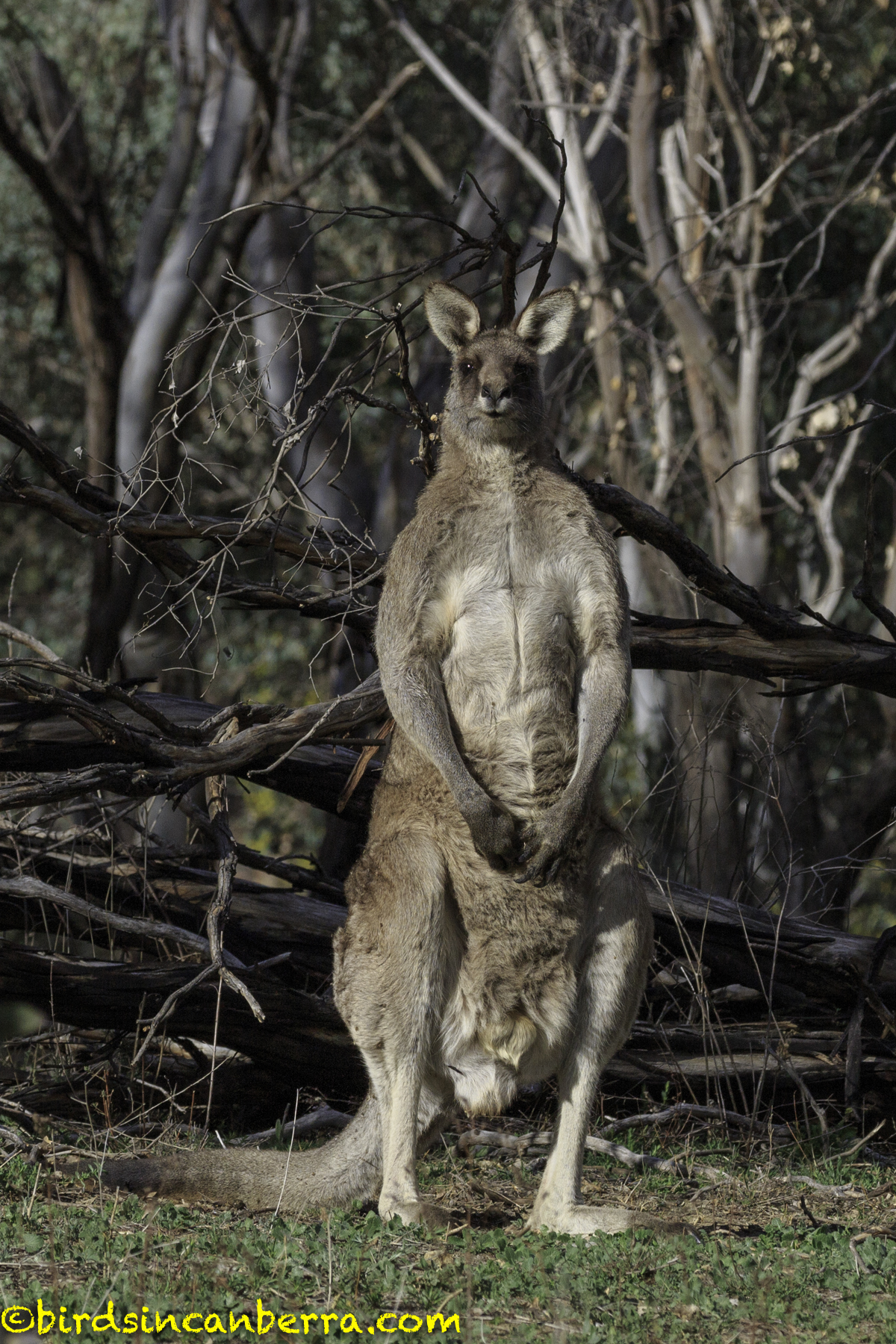I decided to head back to the same part of Red Hill Nature Reserve I was at last weekend to see if I could find more Gang-gangs. It had been such a pleasant spot and the return walk home last time was very enjoyable. The weather was not bad but again the clouds kept blocking the sun at all the wrong times. Despite that challenge I did see more Gang-gangs, in fact I saw two pairs in the one location. I also saw a number of other birds including some Yellow-rumped Thornbills and a Red Wattlebird. I ended up just sitting and watching the Gang-gangs for about 30 minutes, they may now be the birds I have most photographs of. it was a really nice start to a Saturday.
A view of some of the flora on Red Hill Nature Reserve at present
I will get to the Gang-gangs but the first birds I photographed were three Australian Wood Ducks. These birds are very common around Red Hill Nature Reserve and I have even started to notice them in the trees of the surrounding suburbs. I decided to photograph these birds as there were three female in this tree, all on different branches, one on top of the other. After watching the females for a while I then noticed there were three males in the same tree but off to the sides. The female on the top branch was making most noise then the female on the bottom branch, while the female in the centre was the quietist of the three.
The upper and lower female Australian Wood Ducks are both making calls in this photo
The next birds I saw were the ubiquitous Sulphur-crested Cockatoos. They were all over the hill and making such a noise I felt I had to photograph them. Their presence seemed to displace a number of birds including the Gang-gangs. It was not until the Sulphur-crested Cockatoos left that the Gang-gangs returned to their tree.
Like last time, the main attraction for me were once again the Gang-gang Cockatoos. I had gone to specifically look for them so I was happy to see not just one pair but two pairs of Gang-gangs in very close proximity to each other, maybe it was too close. The two pairs were in trees about 20 metres apart. They both seemed to want to be in the northernmost and larger tree. One pair claimed it while the other pair flew to the tree 20 m to the south. They then met’ in a tree in the centre where there was much calling before the “dominant” pair returned to the northernmost tree and the other pair flew to the southernmost tree. This behaviour seemed territorial or at least about having the larger tree.
The first photo grid is of the birds I termed the dominant pair because they held control of the large tree when I departed.
This photo grid below shows the other pair. I note the male’s red crest appears to have a darker part to it so maybe he is s young male in his first breeding season unable to truly challenge a more established mating pair. In the first photo the couple are on part of the southern most tree then most of the photographs show them in the middle tree. The second last photograph shows the female flying from the middle tree back to the southernmost tree, the final photograph shows them both in the southernmost tree. I was unable to get a photo of all four birds in the one tree as the branches obstructed my view.
While photographing the Gang-gangs I was also able to photograph other birds that came by. There was a group of three or four Yellow-rumped Thornbirds who passed behind me and were not perturbed as I turned around to photograph them. One of them was fortunate enough to find something to eat while I was photographing them. It also meant it paused for a moment. They do not stay still long as they skip across the ground looking for insects.
A Grey Fantail also moved through the shrubs and small trees. Please take my word for it, the bird in the photo below is indeed a Grey Fantail, this was the only shot I could get of it.
I assure you, it is a Grey Fantail
On the way back I came across a male and female Galah preening themselves in an old, dead tree. The top three photos are of the female with her distinctive pinkish-red eye, while the bottom three are of the male.
A little further on from the Galahs I heard the unmistakable call of a Red Wattlebird, which I was able to easily see. It was moving from low branch to low branch.
I also saw two nests, although I am unsure which birds made them.
A couple of Eastern Grey Kangaroo photos to finish the post.















